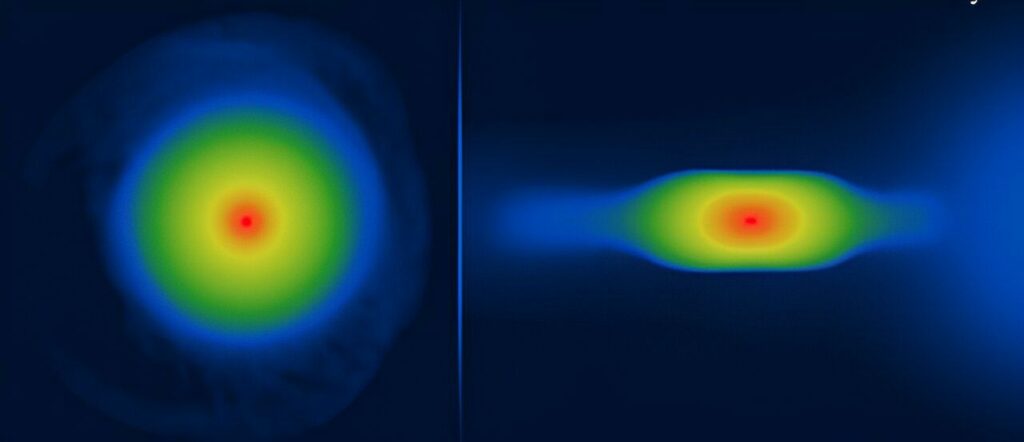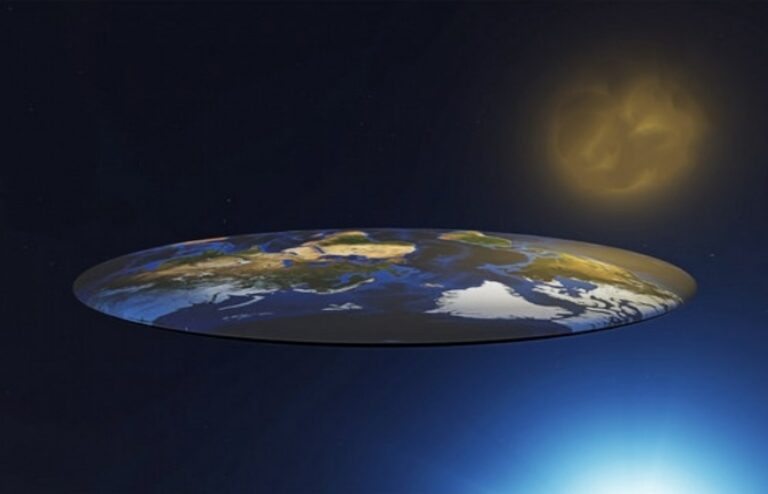New scientific evidence suggests that young planets are not shaped like spheres, but rather exhibit a flattened structure.
Scientists from University of Central Lancashire have possibly identified that planets are flat like Smarties shortly after they are born contrary to the widely held opinion that they are round like balls.
A paper to be published soon in Astronomy & Astrophysics Letters compares the rotational flattening of protoplanets, or very young planets that have been formed around stars recently, to that of oblate spheroids. At this time, the paper can be found and downloaded from the arXiv preprint server.
The researchers from the Jeremiah Horrocks Institute for Mathematics, Physics and Astronomy at the University of Central Lancashire developed computer simulations to check the possibility of the disk-instability theory to explain how planets are created along with the short timescales in which massive rotating disks of gas surrounding newly born stars split into individual protoplanets.
In this way, depending on the given team’s approach, the planet properties have been defined, the observations have been carried out, and the formation mechanism of the gas giant planets has been studied. They particularly prioritized studies on the morphology of young planets and how these young planets could grow into even bigger gas giant planets than Jupiter. They also studied different characteristics of planetary formation, including temperature environments and gas densities.
The study was conducted by Dr. Adam Fenton who is a Ph. D. graduate as of October, 2009. He said many exoplanets, planets that orbit the stars located in other solar systems with the exception of our solar system, have been discovered in the last three decades. Some reason, how they are created always remains a mystery, even though researchers have watched many thousands of them form.
Core accretion with time scales of Myr involves dust particles that cling together and grow big progressively to form planets via long time scales, the other being disk-instability which occurs within time scales of thousand years via a separation of big rotating disks that are around young stars.
One of the most attractive features of this theory is that big planets are potentially capable of quickly formation far from their parent star, which is compatible with some observations of exoplanets.
Writing in Nature, co-author Volker Springel of the Institute for Theoretical Physics in Jena, Germany said: “This was a hugely demanding computational challenge that needed half a million CPU hours on DiRAC, the High Performance Computing Facility in the UK. But the payoff was well worth the effort. ”

Dr. Dimitris Stamatellos, Reader in Astrophysics at UCLan and co-investigator said ‘We had been modeling planet formation for many years and we have never considered examining the shape of the planets as they formed at the end of the simulations. ’We use to presume that they are spherical in shape.
“We were very surprised that they turned out to be oblate spheroids, you know something like smarties”
These observations may finally confirm that young planets indeed have a flattened shape which means that the current less favored theory of disk-instability might help in answering the most important question regarding how planets are formed rather than the more accepted theory of of core accretion.
The scientists also found that new planets accrete as material is gravitationally attracted to the planet, particularly around the pole as compared to the equator of the planet.
These discoveries point to practical concerns of young planets meaning that the way planets look through the eye of the telescope depends on the orientation. By observing young planets like this, researchers gain valuable insights on how the planets formed.
In this research, the researchers are developing better computational models to further study the effects of the surroundings on the shape of such planets and comparing their chemical makeup with those yet to be made through JWST.
The young planets are detected in the last few years with observing facilities like ALMA and VLT which means Very Large Telescope.
Reference:Adam Fenton et al, The 3D structure of disc-instability protoplanets, arXiv (2024). DOI: 10.48550/arxiv.2402.01432
Do not forget to share your opinion with us to provide you with the best posts !




0 Comments